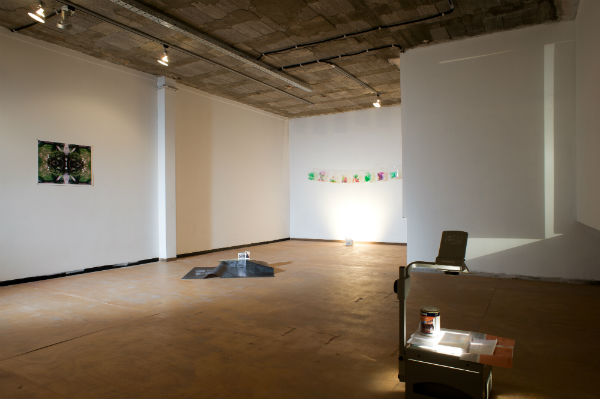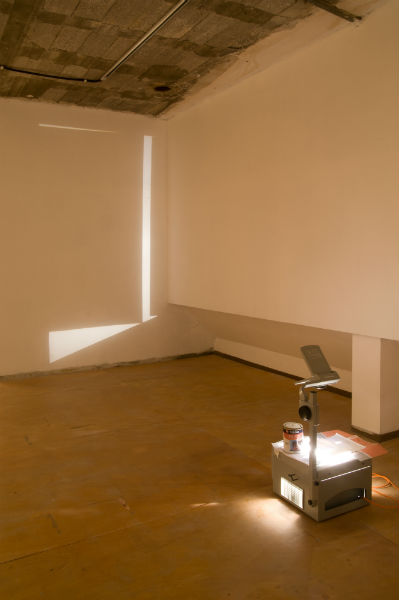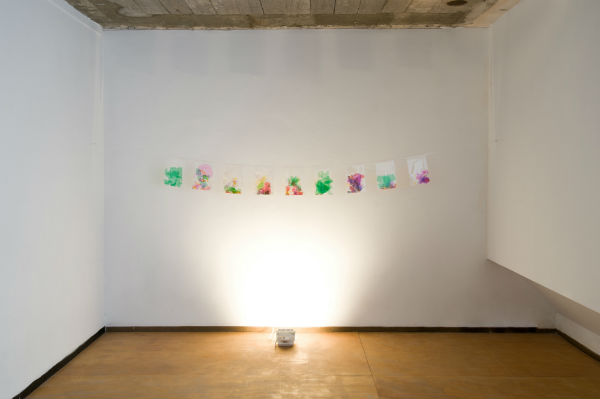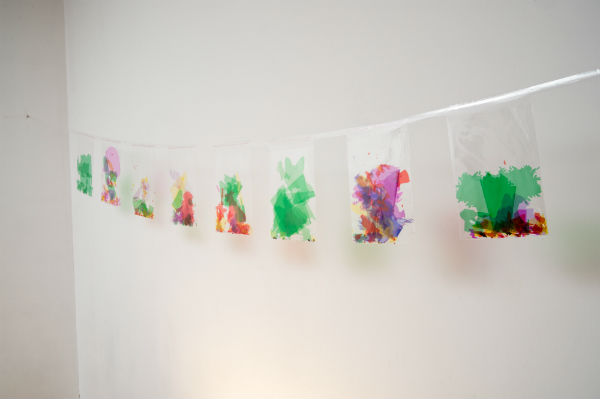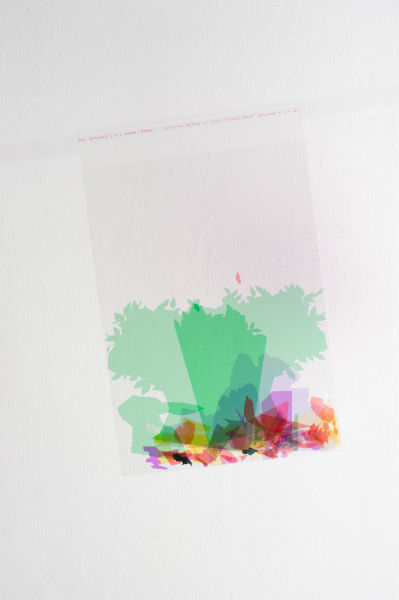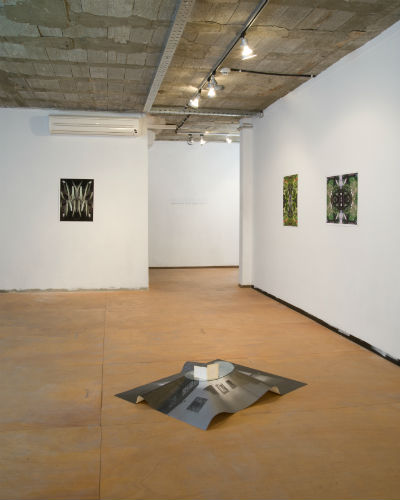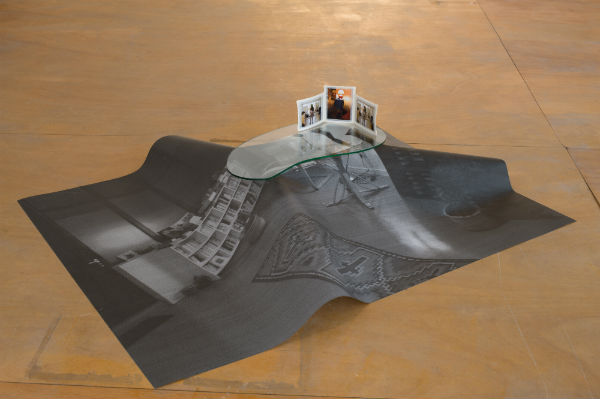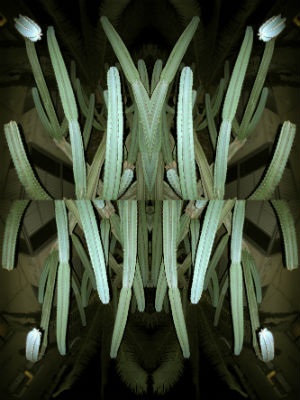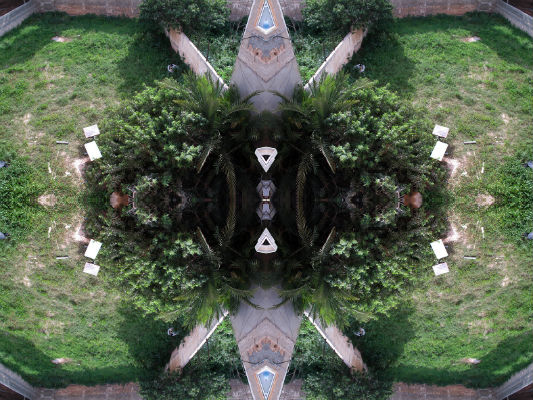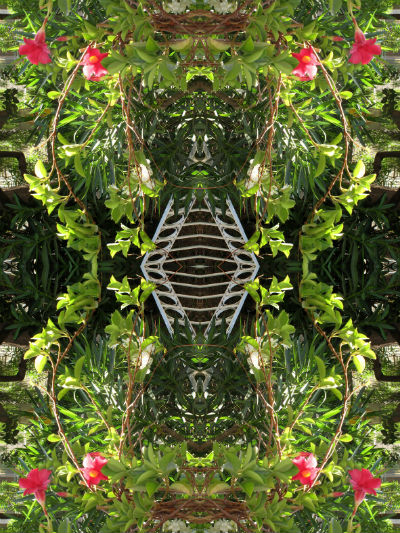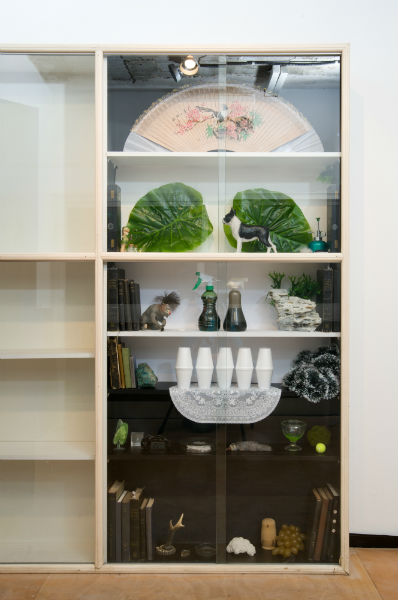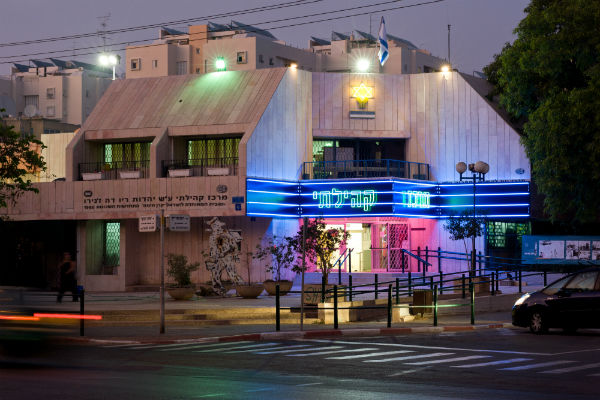WONDERLAND
Danny Yahav Brown // Dana Lev Levnat // Hila Laviv // Yochai Matos // Hila Amram
Kav 16 – Community Gallery for Contemporary Art, Tel Aviv
July - Sep 2011
WONDERLAND is an Israeli contemporary art exhibition featuring works by Danny Yahav Brown, Dana Lev Levnat, Hila Laviv, Yochai Matos & Hila Amram. The exhibition takes place at the gallery space and at the Community Center façade in which the light installation Community Center, by Yochai Matos will be presented till Dec. 2011. The exhibition focuses on the existing space between regular daily life reality and a fantastic one. Influenced by magic, the works presented, are based upon illusion and a misleading strategy.
Each work hides within itself a sort of magic – a result of a technical or conceptual manipulation on an image or narrative. Unlike magic tricks based upon agility and deception, the presented works expose simultaneously its magical trick and inner mechanism. The works displayed at the show are characterized on one hand by simple forms and materials and sophisticated concepts on the other. Contrary to a magic trick or a juggling performance, with an unpretentious appearance and no intention to amaze, the works exhibited restrict themselves to a sly sophistication and a humorous blink. The work's simple nature generate at the gallery space a magical atmosphere, and prove once again that a spectacular artistic approach is not required in order to surprise, entertain or excite.
The artists desire to "trick" the viewer's eye can be seen at the show as a connecting string, but contrary to the pictorial tradition of the Tromp l'Oeil, seeking to reproduce reality through a pictorial optical illusion, they search to present their personal commentary to daily life. Compared to daily life reality outside the gallery space and community center Wonderland is an endless pause of enchanting naughtiness and cynicism, like piping through a keyhole of a magic door.
Community Center, Yochai Matos, Light installation (Neon light), 2011. Yochai Matos custom-made light installation Community Center was done specially for Neve Eliezer Community Center façade. Matos transformed the old familiar building in to a glamorous and elegant hall through the magical touch of the neon sculpture. The installation, an over-adorned colorful neon sign composed of four vertical neon strips on top of which the two flashing words - "Community Center" are placed, emphases the building's essence and its architectonical formalistic structural entrance. The "Hollywood" likewise sign arouse a lively spirit in to the old building, transforming it in to a "shining star" tempting passing by residents to enter and give in to the place and its activities. Matos uses kitsch aesthetics and a marketing language characteristic of shops, supermarkets and casinos. Places which offer "true happiness" and sell deceitful illusions and empty shallow promises. At the end, the seemingly potential of this glowing installation remain as a mere cover of the real thing.
Running on the spot, Hila Laviv, 2011. Hila Laviv's work Running on the spot features nine nylon transparent bags in to which the artist inserted all kind of cellophane color forms remnants from her artistic process. At first impression it seems like a random recollection, but a second glance reveal a meticulous election and arrangement of the cellophane color fragments in to a close layout of little "surprise" bags. Each bag becomes a small condense fantastic world composed of images and objects, embracing within it self an open and associative narrative. Laviv does not aspire to create an enigmatic image but to mitigate the vague and abstract through a delicate action of hand – craft laboring. The cellophane fragments accumulate in to one multilayered image and the two dimensional becomes thee dimensional and vice versa. Laviv's creative process in general begins with the election of a distinct image and ends as an abstract one, through a maximum material reduction, the huge amount of cellophane fragments left behind in general, become at this piece the essence of the work.
Royal Garden, Dana Lev Levnat, 2011. Levnats new photography series Royal Garden is based upon local gardens. Through a simple digital manipulation, Levnat multiplied the photographed image a number of times converting these beautiful places in to hybrid creatures – insect's mutations threatening the viewer. The artist process concentrates in the deconstruction of the visual image and it's reassembling, transforming it from a merely reality transcription in to a subjective alternative representation. Levnat presents in her work a false reality in which the "truth" presented is not an absolute and obvious one. Her photographs sketch a complex triangular relation ship between the photographical technique, the documentation practice and a fictive world perception. These three elements maintain between themselves a balanced relationship in which one element builds the other but at the same time also droughts his existence.
I bought an apartment at the heart of Tel Aviv, Dana Lev Levnat, glass, aluminum, Xerox, c-print and masking tape, 2008. Levnat's work I bought an apartment at the heart of Tel Aviv is composed of a group of objects, memories and associations belonging to the artist that gather together in to one piece. A shoe stand from a shoe shop liquidation sale functions as a base for a Xerox print of a Levnat's Parisian friend's living room. In its translation to the three dimensional sculpture medium the Xerox print became doubtfully a table cloth, doubtfully a carpet on top of which the glass shoe stand rest. On the created table, the artist placed a photographic triptych glued with masking tape with Levnat's friend pictures and home. When looking at Levnat's work to decipher it, the viewer becomes active by the many points of view composing the piece. The work is a kind of mystery script, autobiographic to a large extent, rephrase the elements composing it and provide them with a new meaning and context.
Paradise – the crack under the door, Danny Yahav Brown, overhead projector, book (E. Hemingway "Paradise") and can, 2011. An overhead projector, a bunch of detached paper pages from Hemingway's "Paradise" novel and a can compose Danny Yahav Brown new work, Paradise – the crack under the door. The arranged objects on top of the overhead projector do not stand on line with the projected image on the wall – the abstract syntax of light and shadow consolidates in to a concrete form after a prolonged observation: an open door silhouette from which light emerges. The unsuitability between the composition of objects on top the overhead projector, and the screened image on the wall, rephrase a sort of artistic fraud and create simultaneously embarrassment, confusion and amazement. This is Yahav Brown paradise door, spreading before us the slender promise of a world which is all good, remuneration to our good deeds on earth. This is a metaphorical threshold towards which we bear eyes, motivated by curiosity, asking to see through it. Is this an opening or a closing door? or just a meaningless abstract patch with aesthetic qualities only? Yahav Brown juggles between reality, imagination and metaphor in his work, creating at the same time a multilayer but surprisingly simple piece.
Domestic toxins, Hila Amram, mixed media, 2011. Domestic toxins Hila Amram's new work was created as a site-specific in one of the gallery's book cabinet. Amram, a compulsive object collector, created at the cabinet display an impressive exhibition of objects presenting scientific characteristics. After a postponing view, a new image flickers from the objects layout – a skull. Three hand held fans compose the forehead area, two artificial leafs functions as eyes while two plastic spraying bottles are used for the nasal apertures and a line of doubled polystyrene cups for the tooth. The toxic potential rising from the objects, doughtily domestic doughtily scientific, a line of objects accumulated for a length of time, get stronger at the moment the skull is revealed – like it was a hidden warning sign. Exposing a humoristic reference to the vanitas concept, on the passage of time, the harm it lefts behind and our temporariness in this world. Amram bases her work on illusionist and eye deceiving paintings but while at this genre one image leads to another, at Amram's work the composition of separate objects create the complete image.
Curator: Sally Haftel Naveh

